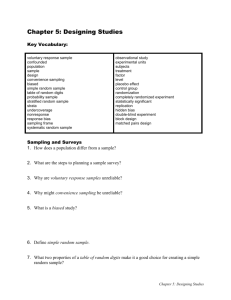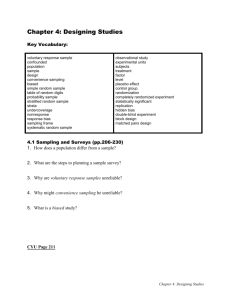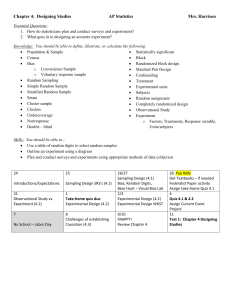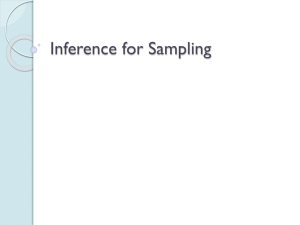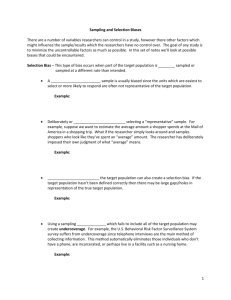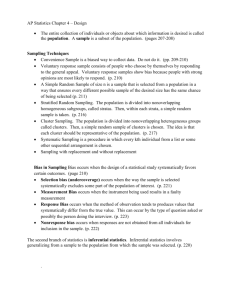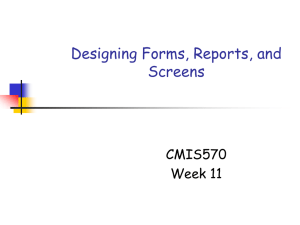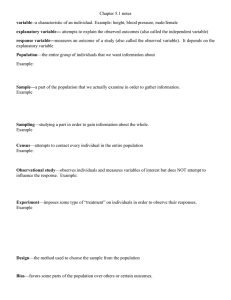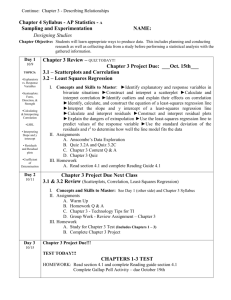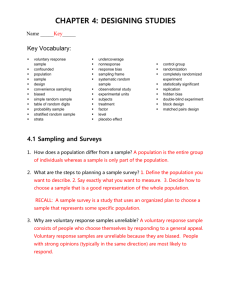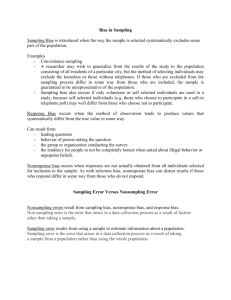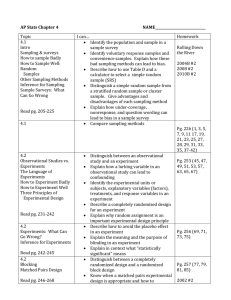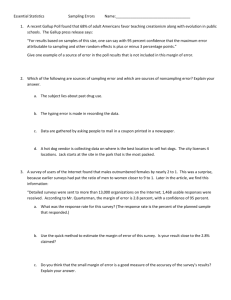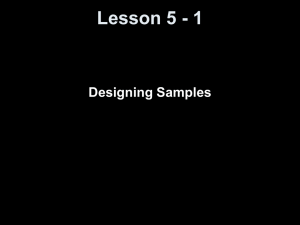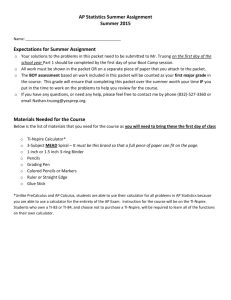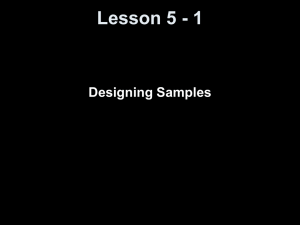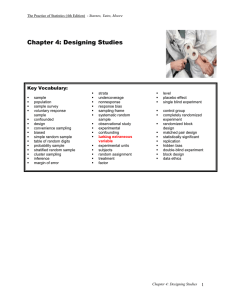The Practice of Statistics
advertisement
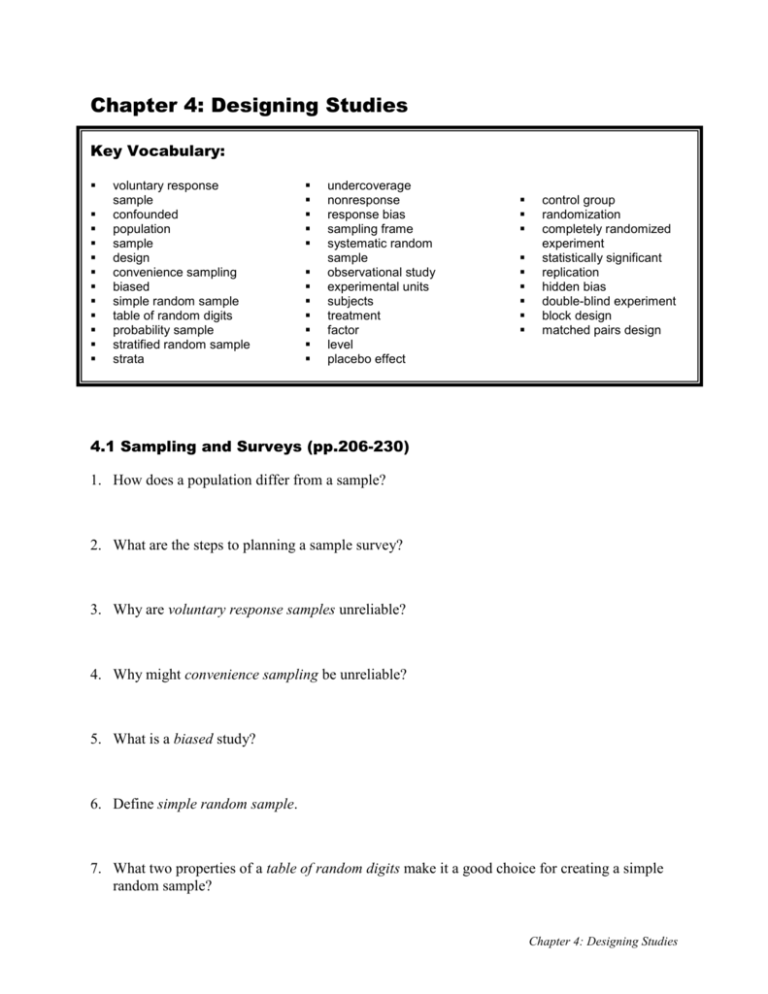
Chapter 4: Designing Studies Key Vocabulary: voluntary response sample confounded population sample design convenience sampling biased simple random sample table of random digits probability sample stratified random sample strata undercoverage nonresponse response bias sampling frame systematic random sample observational study experimental units subjects treatment factor level placebo effect control group randomization completely randomized experiment statistically significant replication hidden bias double-blind experiment block design matched pairs design 4.1 Sampling and Surveys (pp.206-230) 1. How does a population differ from a sample? 2. What are the steps to planning a sample survey? 3. Why are voluntary response samples unreliable? 4. Why might convenience sampling be unreliable? 5. What is a biased study? 6. Define simple random sample. 7. What two properties of a table of random digits make it a good choice for creating a simple random sample? Chapter 4: Designing Studies 8. State the two steps in choosing an SRS? 9. How do you select a stratified random sample? 10. What is cluster sampling? 11. What is the difference between a strata and a cluster? Look at example on page 218 12. Give an example of undercoverage in a sample. 13. Give an example of non-response bias in a sample. 14. What factors can cause response bias in a sample. 15. How can the wording of questions cause bias in a sample? 16. What is the difference between nonresponse and voluntary response? 4.2 Experiments (pp.231-261) 1. How does an experiment differ to an observational study? 2. What is a lurking variable? 3. What is confounding? Chapter 4: Designing Studies 4. Explain the difference between experimental units and subjects. 5. Define treatment. 6. What is the difference between factor and level in an experiment? Example on page 235. 7. Explain how to perform a completely randomized design. 8. What is the significance of using a control group? 9. The basic principles of statistical design of experiments are: 10. Describe the placebo effect. 11. Define randomization. 12. Define statistically significant. 13. Describe a block design. 14. When does randomization take place in a block design, and how does this differ to a completely randomized design? Chapter 4: Designing Studies 15. What is the goal of a matched pairs design? 16. State the two most common ways in which matched pairs experiments are designed. 17. What are the advantages of a double-blind study? 4.3 Using Studies Wisely (pp.261-271) 1. What are the criteria for establishing causation? 2. What are the criteria for establishing inference for a population from a given sample? Chapter 4: Designing Studies
